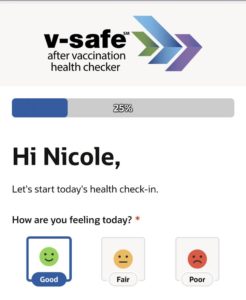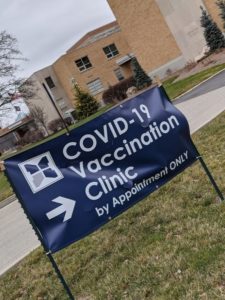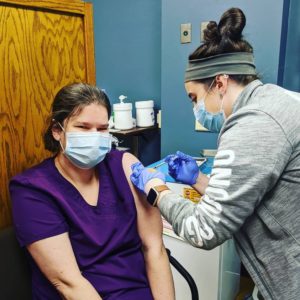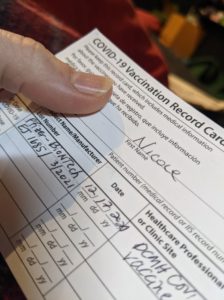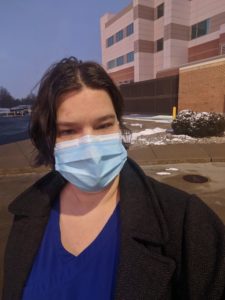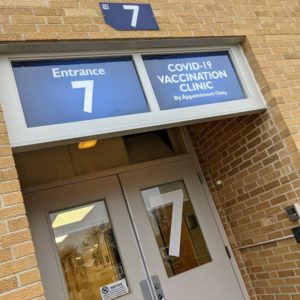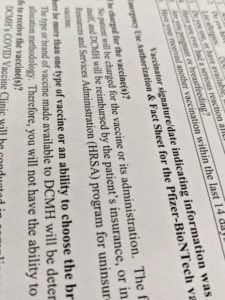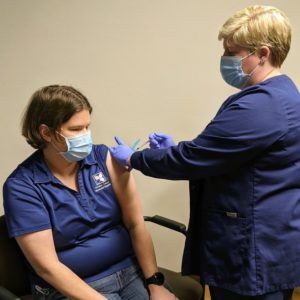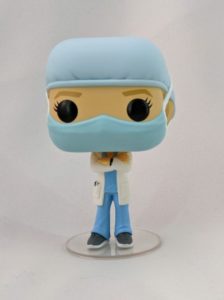
Babies are some of my favorite patients
My arm only hurts if I push right where I got my jab (what a delightful term). I made it through a topsy-turvy clinic schedule without excessive fatigue, and I currently have nothing to complain about to the nice folks at V-safe who sent me my daily reminder text to find out how I was doing.
I also do not have any new super powers, unless you count filling the dishwasher without being asked to (I am a terrible housemate).
Can I (should I) get the coronavirus vaccine while pregnant or breastfeeding?
Short answer: It depends.
Long answer:
Let’s talk a little bit about how mRNA vaccines work so that we’re all on the same page with regard the science of vaccines, because I think that helps answer the question. There are, after all, some vaccines that you are NOT currently recommended to get while pregnant (MMR, Varicella, Live influenza, Zostavax; HPV, Meningococcal B) so the question with a new vaccine is certainly relevant.
Vaccines work by introducing your body to an antigen (A recognizable part of the thing we are protecting against) in some sort of low threat way. Bodies are excellent at recognizing things that do not belong — and not only do they seek and destroy, but they create specific antigen binding molecules called antibodies, as well as engaging your T and B the memory cells to remember, locate, and inactivate that particular antigen should ever be encountered again. There are no three strikes rules in your immune system.
One of the first widespread vaccines in the Western world was the smallpox vaccine. The process of smallpox vaccination (ask anyone who was a vaccinated child prior to 1972 about their scar) involves scratching a hole in the skin and introducing a close cousin to smallpox called cowpox into the hole. Cowpox is much less deadly than smallpox, and vaccinating with cowpox dramatically reduced the attack rate of smallpox, which is a disease that now has the dubious distinction of existing only in the laboratory.
We still use live virus in some vaccines today. The MMR, Varicella, live inactivated influenza, and Zostavax (old shingles) vaccines use a live inactivated virus – real viruses that have been in some way altered to make them slow and sluggish; easy prey for a nimble immune system. However, as any pregnant person can tell you, pregnancy makes everything in the body go haywire – including the immune system. So we don’t give live virus vaccines to pregnant people (or people with heavily suppressed immune systems) because of the risk that the virus could pose to parent or baby if it proved to be too quick on its feet.
The majority of vaccines today don’t use whole live virus, inactivated or not, because we’ve learned a lot of more predictable ways to present antigens to our cells. I’ll save the lecture on vaccine subtypes, but mRNA vaccines are a whole new way of presenting antigens from a public health standpoint.
And that’s a big part of the anxiety around these vaccines, right? This is all new technology, after all.
Except that it isn’t. In the oncology research labs, where some really amazing scientists keep trying to find better ways to treat cancer, mRNA vaccine technology has been under development for more than a decade. It’s not, actually, all that new. It’s just never been used for -this- type of vaccine before.
Your cells contain vast lengths of DNA – the instructions for making the proteins that make you – folded up into those infamous double helices and stashed in the nucleus in tightly knotted chromosomes. In order to make a protein, a lot of complicated biology happens to make a copy of the relevant section of DNA, using a strip of bases known as mRNA. That’s short for messenger RNA, which is exactly what it does: mRNA takes the instructions from the DNA and carries them into the ribosomes, where it’s used as the blueprint for assembling amino acids into a protein.
Enter the mRNA vaccine. When you are injected with an mRNA coronavirus vaccine, your body is handed a whole bunch of little instruction manuals for making an easily recognizable part of the coronavirus spike protein. Because RNA looks like RNA no matter where it came from, your cells pick it up and hand it over to the ribosomes. The ribosomes do their thing, and voila! Your cells have made a viral antigen. It’s recognizable by your body as Definitely Not Me, and so your immune system gets to work recognizing, remembering, and neutralizing. There’s no actual coronavirus involved in the administration, and nobody has to get scratched with a stick and rubbed with cowpox.
Still with me? That was a lot of immunology.
Back to our pregnant-and-nursing people who are still waiting for me to explain what all of this has to do with them, then, and I’ll explain.
There are two types of vaccines that we don’t recommend giving during pregnancy: live inactivated ones (because your immune system is being deliberately suppressed by your body in order to avoid letting it notice that you’re growing a person who is about half Definitely Not You, and so we don’t trust it to catch the live virus in a safe and efficient manner), and vaccines for which we don’t have enough safety data to make a call yet, but where delaying vaccination for nine to ten months is unlikely to pose a significant risk to the pregnant person.
And that’s where it depends.
You see, yellow fever is a highly contagious infectious disease in some parts of the world — and the only vaccine we have is a live inactivated one. But because the risk of dying from yellow fever is so high, the yellow fever vaccine is still recommended in pregnancy if you can’t avoid going to an area where you are at high risk of catching it.
We don’t have enough data on either of the coronavirus vaccines in pregnancy (see yesterday’s post on the power of numbers) to make a clear statement about safety. The science says that there is nothing in the way the coronavirus vaccine works that would pose a threat to a developing infant (it’s just a set of instructions, after all) — but I don’t have an absolute answer to give you here.
If you are pregnant and you get COVID-19, you are more likely than a nonpregnant person who’s otherwise just like you to have severe COVID-19 disease (including ICU admission and death). You are also at increased risk of preterm labor and delivery, and of having a cesarean section at that delivery. Those are notable concerns!
Being vaccinated in late pregnancy may allow your body to pass antibodies across the placenta to protect your baby, as well. That’s why we give pregnant people a Tdap vaccine at 28 weeks – to help protect babies from whooping cough through what we call passive immunity. The body is designed to pass antibodies through the placenta to a growing baby, in order to help protect that baby against things that its immune system is likely to encounter. Developing passive immunity through vaccinating pregnant people has not been tested with coronavirus vaccines, but it’s likely that it will happen to some degree.
If you are pregnant and eligible for the vaccine, you should talk to your doctor about being vaccinated so that you can make the best decision based on the data available. If your risk of exposure to COVID-19 is high, then you and your doctor may decide that getting vaccinated is the safest course. If your risk of exposure is low, then maybe you will make a different decision.
What if I want to get pregnant soon?
There’s no reason that we know of to avoid being vaccinated if you’re planning to get pregnant. We aren’t aware of any effects on fertility related to the vaccine — and the spike protein is pretty unique. Remember, we are teaching your body to recognize a single part of the coronavirus itself – so if there were concerns about fertility related to coronavirus immunity, we would be quite likely to see them in people who had recovered from COVID-19.
What about breastfeeding babies?
mRNA is very fragile. It’s designed to run a set of instructions from one part of a cell to another and then be recycled. Remember all those amazing ultra-cold freezers that the Pfizer vaccine required? That’s because mRNA breaks down very quickly at room temperatures. The vaccine itself is unlikely to make it to your baby through breast milk — but if some of it did survive that long, then being doused in hydrochloric acid in the baby’s stomach will finish it off.
What we know is that antibodies are expressed in breast milk and are another source of protection from infection for a growing baby. Being vaccinated while breastfeeding is likely to provide some passive immunity for your baby, and is unlikely to cause any harm to them. However, some people are very sensitive to illness, and because they may feel poorly for a day or so (I hope everyone’s vaccine experience is as flawless as mine!), that may affect their ability to breastfeed (it’s still safe, but nursing a baby when you feel like dirt is No Fun) or to maintain milk supply (stay hydrated!!!) through those days. It may take extra effort to make sure breastfeeding the baby continues without interruption.
There are trials being started now (in animals) looking at reproductive safety specifically, so if more data emerges, I will try to update!
